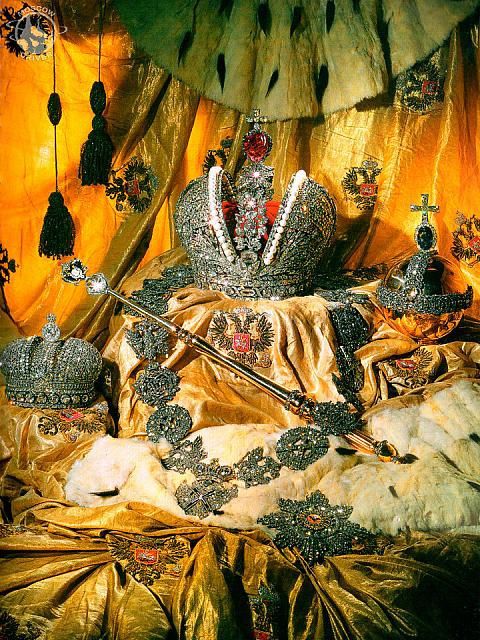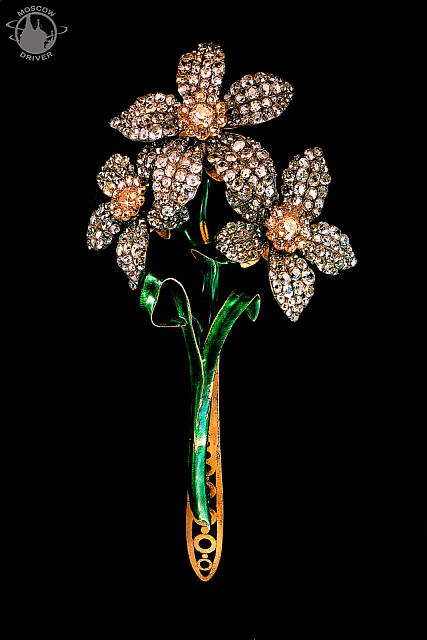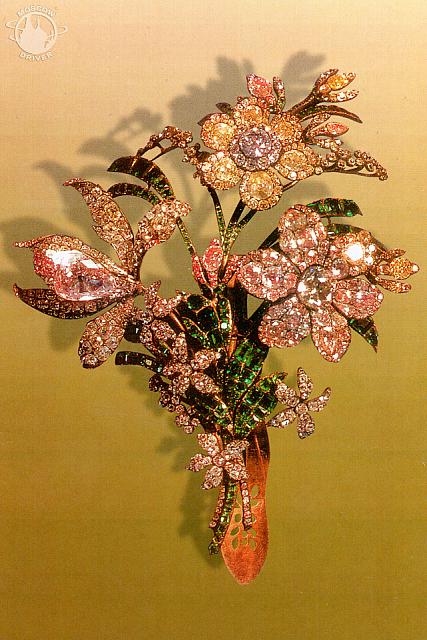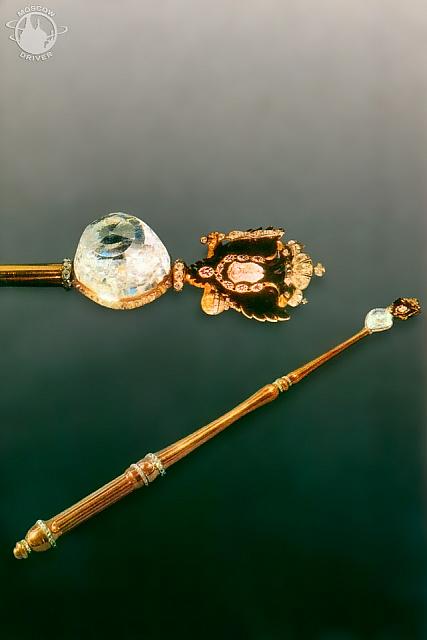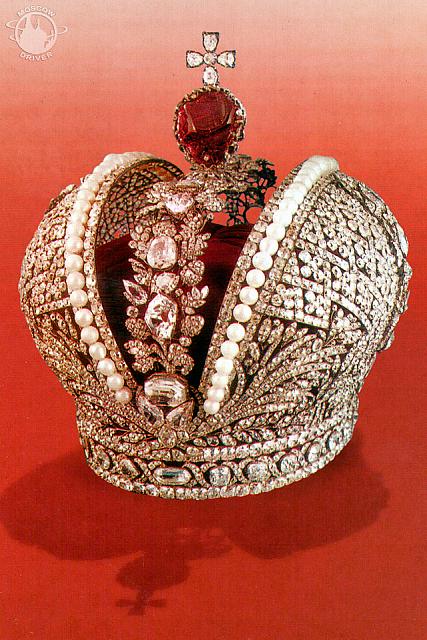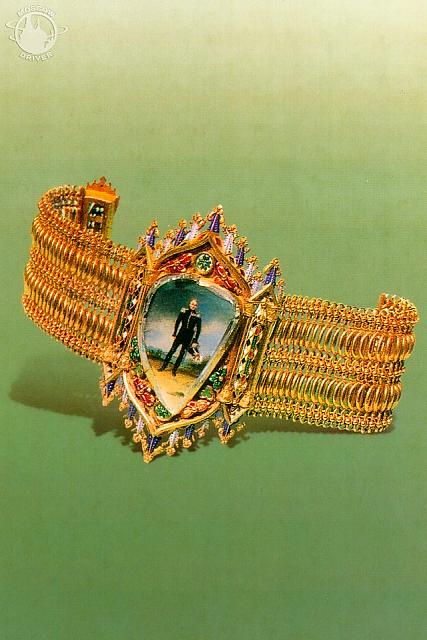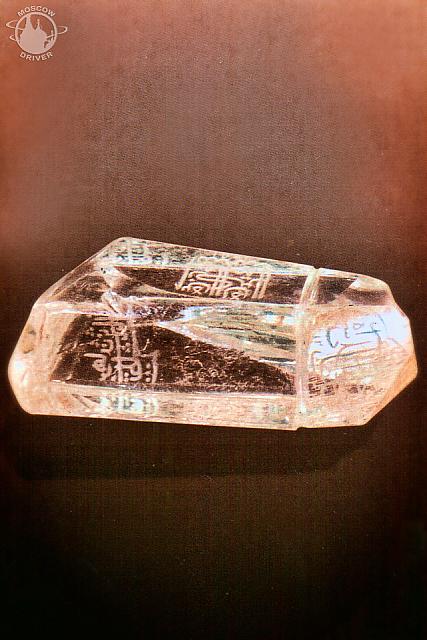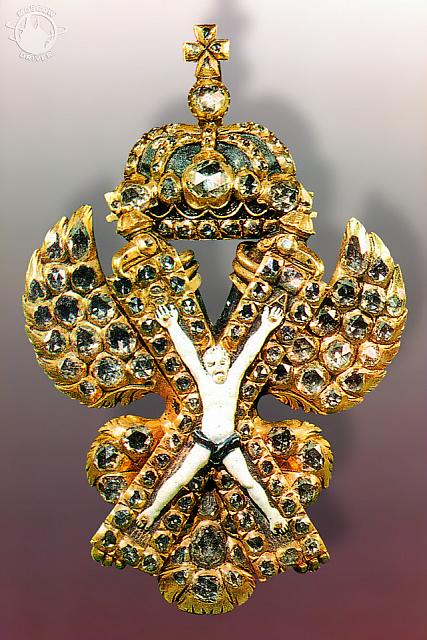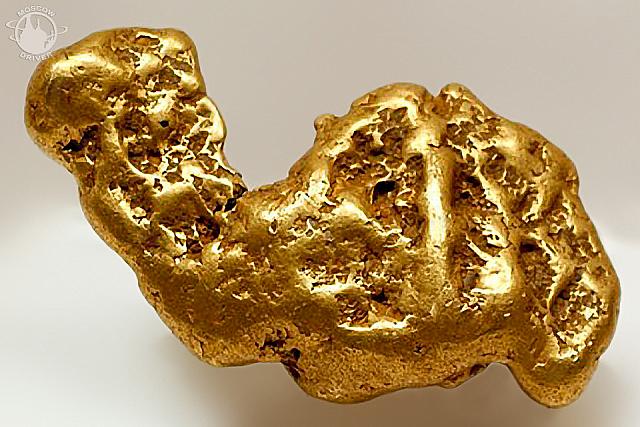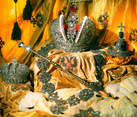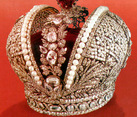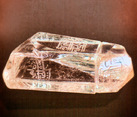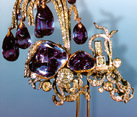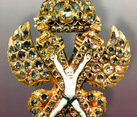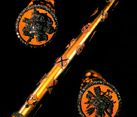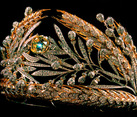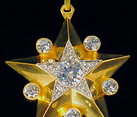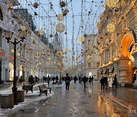Diamond Fund of Russia
Tour Information :-
Duration:30-40 min
-
Location:Armory Chamber of Moscow Kremlin
-
Address:Moscow Kremlin
-
Museum Hours:Open daily: 10:00-17:00; break hours 13:00-14:00
Closed Thursdays -
Admission:500 rub ($17)
-
Official site:Gohran of Russia
The Kremlin’s Diamond Depository dates back to the reign of Peter I, who decreed for the most valuable treasures to become property of the Russian state, not only of the Royal Family. From then on, precious regalia, insignia and secular jewelry belonging to several generations of Russian rulers would be stored in the Diamond Room in St. Petersburg until 1914. When WWI broke out, the collection was moved to Moscow and placed in the Armory basement, where it would stay for nearly 8 years. The Diamond Fund was established in 1922, but only in 1967, when the Soviet state was celebrating its 50th anniversary, were the treasures placed on public display.
Originally planned as a temporary even to give the high-ranking guests attending the festivities an opportunity to see Russia’s crown jewels, the exhibition was extended several times until a special governmental decree conferred upon it the status of a permanent display. It is not a museum in the strict sense of the world, but remains a part, although inviolable, of the state gold reserves. This explains why it comes under the Ministry of Finance of the Russia Federation, and not the Ministry of Culture.The exhibition is located in two relatively small rooms with subdued lighting, which is specially regulated and focused, and thick carpeting to muffle the sound of footsteps and voices. The first room, which is devoted mainly to modern exhibits, contains: Russian diamonds from various deposits, including named stones, the weight of which varies from several dozen to several hundred carats; Russian-cut diamonds; a small collection of gems; a unique collection of jewellery made by masters at the Gokhran (the State Precious Metals and Gems Repository) experimental laboratory, and a world-famous collection of gold and platinum nuggets. The second or Historical room contains the crown jewels of the Russian Empire.
The works of the master jewellers were so exquisite and the precious stones themselves so superb, that even in its incomplete state this collection is one of the Great Three, i.e., the three finest collections of this kind in the whole world, collections which are state property. In terms of artistic, historical and material importance the Great Three consist of the collection of the Persian shahs, which was systematically built up by the rulers of Persia over the centuries, the crown jewels of Great Britain, which are kept in the Tower of London, and the Diamond Fund of Russia.Russia’s Diamond Depository is an assemblage of precious stones, jewelry, rare gold and platinum nuggets of tremendous historical and monetary value and creative merit. Besides the decorations for gala robes of Russian empresses, Crown Jewels, State Regalia (symbols of power and glory of the Russian Empire) and the Imperial orders, the collection in Historical or Small Room features seven gems, known as “historic,” that have no match anywhere else in the world.
The famous Orlov diamond (189.62 carats) on a gold royal scepter was a gift given to Catherine II (the Great) by Count Grigory Orlov. According to the legend, it was one of two famous stones that served as eyes for an Indian idol in the Vishnu Temple near Madras. After travelling a lot all over the world it ended up in the hands of famous wealthy Armenian Lazarev who traded in diamonds. Count Orlov purchased the diamond from him for 400,000 rubles. This amount was more than twice as large as the official annual income of the Count but his plan was worth more than just money. The largest diamond in the world at that time was given to Catherine on her name day. Soon it was displayed on the state scepter, and Orlov's name was immortalized in the name of this diamond. A giant dark-red spinel (398.72 carats) adorns the Great Imperial Crown, with which all Russian monarchs, from Catherine II to Nicholas II, were crowned. Royal envoy Nicholas Spapharius bought this fiery, shimmering stone in China in 1676 under orders from Czar Alexius, the father of Peter I. The Chinese seller, a nobleman of distinction, asked Spapharius to keep the deal a secret, otherwise he could have faced the death sentence for letting such a treasure leave China.A big Colombian emerald (136.25 carats) of the purest dark green hue is inserted in a brooch that once belonged to Empress Elizabeth, the wife of Alexander I. Speculating about the gem’s provenance, Soviet historian Fersman wrote: “It must have been found during the Middle Ages, at the time America was discovered. In all likelihood, the Portuguese had removed it from a native temple in Colombia. Then the stone somehow made it to India, where it blended in with local emeralds. It was always a mystery how valuable treasures from Oriental treasure-troves and harems ended up in European antique shops, but one day this gem, too, made its way to Europe.”
The world’s largest flat diamond (weight 25 carat, surface 7.5 square cm), embedded in a gold bracelet, also belonged to Empress Elizabeth. Instead of glass, the stone covers a miniature watercolor portrait of Alexander I on ivory, replicating the gem’s shape.One of the largest in the world, the Ceylon cut sapphire (260.37 carats), shining from a diamond-encrusted gold brooch, was purchased by Alexander II from an Indian raja at the 1862 Grand London Expo as a present for his wife, Empress Maria. “It pales the famous Rospoli in Paris, and even the legendary sapphire of the Duke of Devonshire,” Fersman wrote.
The unique chrysolite (192.6 carats) from the Red Sea Island of Zaberget came to Russia in the 19th century. According to legend, it had belonged to Byzantine emperors before Byzantium was looted by the Crusaders in the early 13th century. Russian jewelers gave it a set of vintage cut diamonds in 1985.
The seventh ‘historic’ stone and one of the best-known gems in the world is the Shah diamond (88.7 carats), found in the 16th century in the mines of Golconda, an early Indian state. It belonged to the Great Moguls, rulers of India and Afghanistan. According to legend, it was a Mogul talisman hanging above the throne on a silk thread. After the Great Moguls were defeated by the Persians in the 18th century, the diamond became property of Nadir, the Shah of Persia. The names of its successive owners are engraved in Arabic on the stone, which was believed to bring its owner great strength and power. After Alexander Griboedov, the Russian ambassador to Persia and also a great diplomat and writer, was assassinated in Tehran in 1829, the Shah sent lavish gifts to Emperor Nicholas I to defuse an international conflict. The stone was among those gifts, and was named ‘Shah’ in honor of the giver.In the 1922 collection, 40% of items were from the reign of Catherine II. Wearing a floral diamond brooch, a diadem, and large earrings with floral ornaments, the Empress dressed up as Flora, the Goddess of Flowers, for one of the royal fancy dress balls. A thin layer of multicolored tinfoil gives the translucent diamonds rose, tulip and chamomile hues. The gold leaves are covered with green enamel. Diamond bees are sitting, as if frozen, on the petals of the diadem and earrings.
The depository was considerably enlarged with diamonds from Yakutia during the decades of Soviet rule. In line with the tradition, they were all given names like “26th Congress of the Communist Party” (342 carats), “60 Years of Komsomol” (200.7 carats), “Soviet Constitution” (119.6 carats). Some diamonds were also named in honor of the first astronaut, Yuri Gagarin, and the first female astronaut, Valentina Tereshkova. A large diamond was named “Free Russia” (242 carats) in the 1990s.
The collection also features valuable Russian and international insignia. The diamond symbol and star of the Order of the Holy Apostle Andrew the First Called is believed to have belonged to Peter I, who established this first Russian order in 1698 for distinguished military leaders. Peter himself was the sixth person to win it for the capture of two Swedish warships in the Neva delta. The typical awards in early Russia were things like gold and silver ladles, luxurious furs, royal caftans or fur coats. Russia’s first ‘female’ order of St. Catherine, shaped as a gold medallion, was established by Peter to celebrate his army’s fortunate deliverance from a very dangerous military situation in 1711, when Peter I and his army were surrounded by Turkish troops, who outnumbered the Russians five times over. Skillful negotiations, coupled with some lavish gifts sent by Peter’s wife Catherine to the Turkish commander convinced the Turks to conclude an armistice.The collection includes some Soviet insignia as well, most notably the Marshal Star and the Victory Order. Established for Soviet Marshals in 1940, the Marshal star is a five-pointed star with diamonds embedded between the points, and another platinum, diamond-encrusted star in the middle. The standard Victory Order is a five-pointed platinum star with diamond-encrusted ruby points. Established in 1943, the order was awarded to 11 highest-ranking military commanders during the Great Patriotic War (WWII).
The gold and platinum nugget collection is centered around the exhibits from the St. Petersburg Mining Institute, transferred to Moscow after 1917. Some gold nuggets are named according to their shape: “Dolphin” (10 kg), “Camel” (9.3 kg), and the tiniest one, “Mephistopheles” (20.25 g), a true miracle of nature. The “Rabbit Ears” nugget (3.3 kg) from the Urals contains 93.2% of pure gold. It was found by the roadside in 1935.The platinum nugget called “Ural Giant,” weighing around 8 kg, is one of the largest in the world. Unlike gold nuggets, platinum nuggets are much rarer, and their shape is usually lumpy and boring. There was no use for platinum until the 18th century, so platinum nuggets were thrown away as useless rocks. Not anymore. The Diamond Fund display contains a small, but extremely interesting collection of nineteenth-century platinum coins, which are a numismatic rarity.
Today platinum is essential for the chemical industry: vessels made of platinum are used to store acids. It is also used for making heat-resistant apparatus and thermometers, finely calibrated medical equipment, and standard weights. In the late nineteenth century it began to be used in jewellery making, and in this sphere the precious metal is gaining ever-increasing popularity.
Previous
Armory Museum
Next
Grand Kremlin Palace
About Me in Short

My name's Arthur Lookyanov, I'm a private tour guide, personal driver and photographer in Moscow, Russia. I work in my business and run my website Moscow-Driver.com from 2002. Read more about me and my services, check out testimonials of my former business and travel clients from all over the World, hit me up on Twitter or other social websites. I hope that you will like my photos as well.
See you in Moscow!

